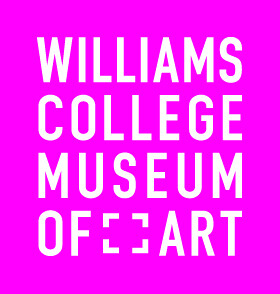June 29–November 11, 2018
15 Lawrence Hall Dr.
Williamstown, Massachusetts 01267
USA
T +1 413 597 2429
F +1 413 597 5000
wcma@williams.edu
Dance We Must: Treasures from Jacob’s Pillow, 1906-1940 explores the contributions of Jacob’s Pillow founder Ted Shawn and the iconic Ruth St. Denis to American modern dance. Gathering over 350 materials, including more than 30 costumes and accessories, over 200 photographs, five original antique costume trunks, and a dozen original artworks from both the Jacob’s Pillow Archives and Williams College Special Collections, the exhibition contextualizes the pioneering work of Shawn and St. Denis within the scope of American art history through artifacts that have never been seen before. Dance We Must will be on view at Williams College Museum of Art (WCMA) from June 29 through November 11, 2018. The opening celebration will take place on July 2, featuring performances by Adam H. Weinert and Williams College Artist-in-Residence in Dance Erica Dankmeyer.
Ruth St. Denis and Ted Shawn transformed dance in America by developing a style of movement and choreography that sought to connect the physical and the spiritual, often inspired by their understanding of ancient, indigenous, and international sources. Borrowing from a variety of influences percolating through elite culture including Theosophy, the Occult, and Orientalism with specific interests in Buddhism and Hinduism, the two forged new territory in international dance after founding Denishawn, a dance school and performing company in 1915. Denishawn made contributions to what would become a recognizably modern and American style of movement by discarding traditions of European ballet, performing in bare feet, often flexed, rather than pointed, in parallel instead of turned out, and making full-body contact with the floor.
St. Denis and Shawn’s appropriation of non-Western and indigenous forms of movement was a search for more authentic modes of self-expression than many in their predominantly white and upper class circles believed existed in the industrialized West. However, it is not possible to separate Shawn’s Native American works from the continued marginalization of indigenous peoples in the United States and globally. Similarly, St. Denis darkening her skin with makeup to appear Southeast Asian can be interpreted as cultural imperialism that brings to the fore white performers’ privilege–then and now–to adopt at will the identities of people of color. Images, dances, and costumes of Shawn and St. Denis intended to celebrate other cultures may be deeply offensive to contemporary audiences, and the historical context within which they lived and worked will be interrogated in the exhibition narrative and programming.
After separating from St. Denis in 1930, Ted Shawn purchased a rundown farm in the Berkshires known as Jacob’s Pillow. There he laid the groundwork for his revolutionary company of Men Dancers and the now internationally-renowned dance festival. Through developing boldly muscular choreography that was influenced by their time farming the land of Jacob’s Pillow and building barn-like dance studios and theaters still used today, Shawn’s Men Dancers choreography placed men, rather than women, as the dominant bodies in dance, and provided insights into discourses of masculinity and queerness in early 20th century America. His Men Dancers toured the country relentlessly, elevating and reimagining the status of men in dance.
WCMA and Jacob’s Pillow are jointly undertaking a project to conserve, research, and fully catalogue these archival materials. The elaborate costumes of St. Denis, Denishawn, and the Men Dancers, some of which date to the early 1900s, are emerging from the original company touring trunks for the first time in decades. The exhibition covers the first three decades of the 20th century charting the movements of St. Denis and Shawn from Los Angeles to Asia to Becket, Massachusetts.
Dance We must is organized by WCMA with the Jacob’s Pillow Archives and the Williams Theatre and Dance Department. The exhibition is designed by David Gürçay-Morris.
For the full press release and information on related performances and programs visit: wcma.williams.edu


